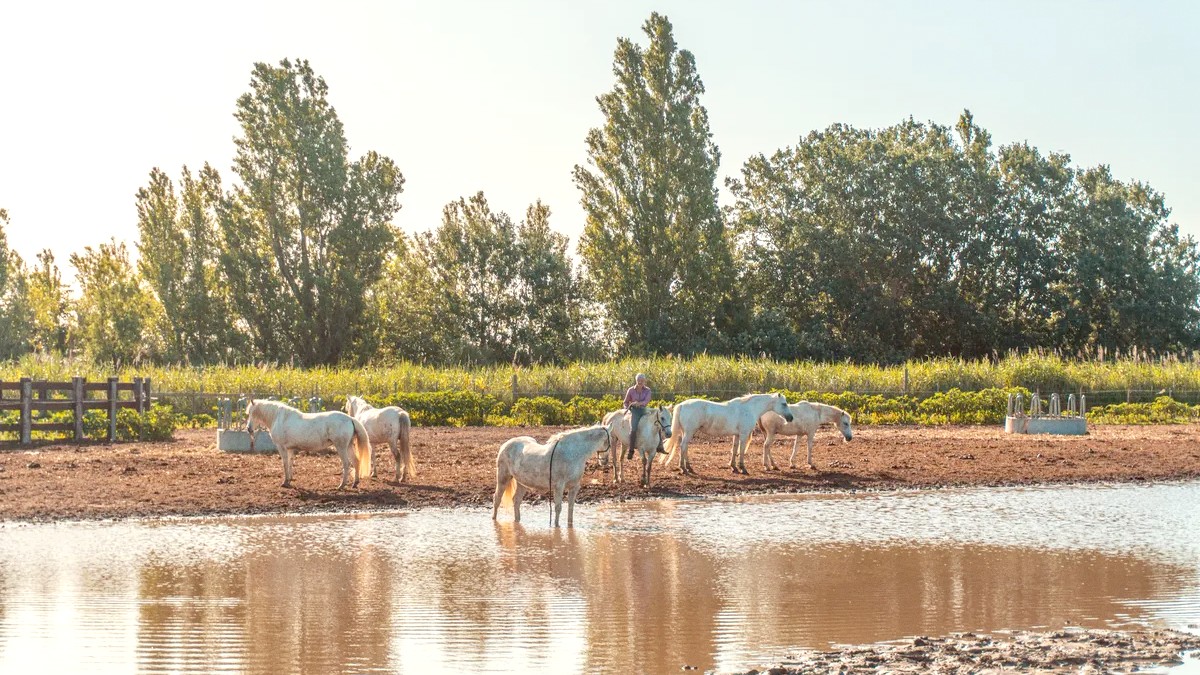
France
The moment you arrive, the Camargue's distinct character becomes clear. The light here is a special quality, casting long shadows over the marshlands and illuminating the vivid colors of its flora and fauna. This area welcomes those seeking an adventure beyond conventional tourism, presenting opportunities to witness wildlife in its natural habitat and engage with traditions passed down through generations. From the iconic white horses that roam free to the elegant pink flamingos wading in shallow lagoons, the Camargue yields scenes of breathtaking beauty. Its towns, like the fortified Aigues-Mortes or the coastal Les Saintes-Maries-de-la-Mer, act as gateways to this wilderness, each presenting a glimpse into the region's unique past and present. This guide assists your navigation and appreciation of the Camargue's charm, connecting your visit deeply with its untamed heart.
The Camargue's history spans millennia, shaped by natural forces and human effort. Its position at the mouth of the Rhône, a major European artery, made it a crossroads of civilizations. Nearby Arles, the gateway to the Camargue, is a Roman heritage with an amphitheater, theater, and other ruins. These structures point to a past as a thriving provincial capital of the Roman Empire, a time when the region already served as a hub of activity, linking the interior of Gaul with the Mediterranean world.
Later, in the medieval period, the Camargue played a role in France's expansion. Aigues-Mortes, with its imposing medieval ramparts, is a testament to King Louis IX's ambition. He built this fortified city and its port in the 13th century to give France direct maritime access to the Mediterranean, launching crusades from its shores. The city's construction involved extensive work to manage the wetlands, a challenge locals continue to face daily. Beyond these grand historical narratives, the Camargue's history is deeply intertwined with its unique agricultural and pastoral traditions. The cultivation of salt, from Roman times, shaped the landscape and economy. Rearing semi-wild horses and black bulls, managed by 'gardians' or cowboys, created a distinct culture with customs, dress, and festivals. This tradition, rooted in a bond between people, animals, and the land, persisted through centuries. The Camargue today holds these layers of history, from ancient Roman grandeur to medieval crusader ambitions and enduring pastoral life, making every visit a journey through time.
The Camargue presents a truly unique blend of elements, giving visitors an experience that combines wild nature with a deep cultural heritage. It is a vast, flat expanse, where the two main branches of the Rhône River meet the Mediterranean Sea, forming a delta that hosts an extraordinary wetland ecosystem. Here, the landscape is a mosaic of brackish lagoons, salt marshes, and rice paddies, all under a vast, open sky.
The region is famous for its distinct wildlife. Pink flamingos, often seen wading in the shallow waters, are a common sight, alongside hundreds of other bird species that use the Camargue as a stopover on their migratory routes or as a wintering ground. The area is also home to the iconic white Camargue horses, semi-wild animals that roam freely, and the black Camargue bulls, bred for traditional bull games rather than for meat. These animals are integral to the region's identity and livelihood.
Local cowboys who manage the horses and bulls, maintaining centuries-old traditions.
Traditional events featuring the black Camargue bulls.
A popular activity that connects visitors with the region's equestrian heritage.
Events that display local customs and way of life.
Arles, Les Saintes-Maries-de-la-Mer, and Aigues-Mortes each add historical and cultural flavor.
The Camargue is a place for nature enthusiasts, history buffs, and those seeking an authentic cultural experience away from the bustling crowds of typical tourist destinations.
The Camargue holds recognition as a Regional Natural Park (Parc Naturel Régional de Camargue) and a Ramsar site for its wetland conservation. This protection preserves the delicate balance of its diverse habitats and the many species they support, making it a prime destination for nature enthusiasts and conservationists alike.
The flat topography and the constant interplay of freshwater from the Rhône and saltwater from the Mediterranean contribute to a highly productive ecosystem. This environment supports a high density of wildlife, especially avian species.
The Camargue is a destination for those who appreciate the raw beauty of nature and rich cultural narratives.
The Camargue offers a range of towns, each with its own character and historical significance, acting as gateways to the delta's wilderness and cultural experiences. From ancient Roman heritage to medieval fortifications and a coastal atmosphere, these locations enrich any visit.
These towns are not just points on a map; they are living parts of the Camargue, each telling a story of human adaptation and tradition in this unique natural setting.
A city of Roman heritage with an amphitheater and theatre, serving as a cultural gateway to the Camargue.
A coastal pilgrimage site, known for its beaches and Gypsy pilgrimage in May.
A fortified medieval city, built by King Louis IX, with impressive ramparts.
The Camargue Regional Natural Park safeguards this unique wetland ecosystem. The park boundaries protect the various habitats, including the brackish lagoons, salt marshes, and cultivated areas, ensuring the survival of its characteristic wildlife and traditional land uses.